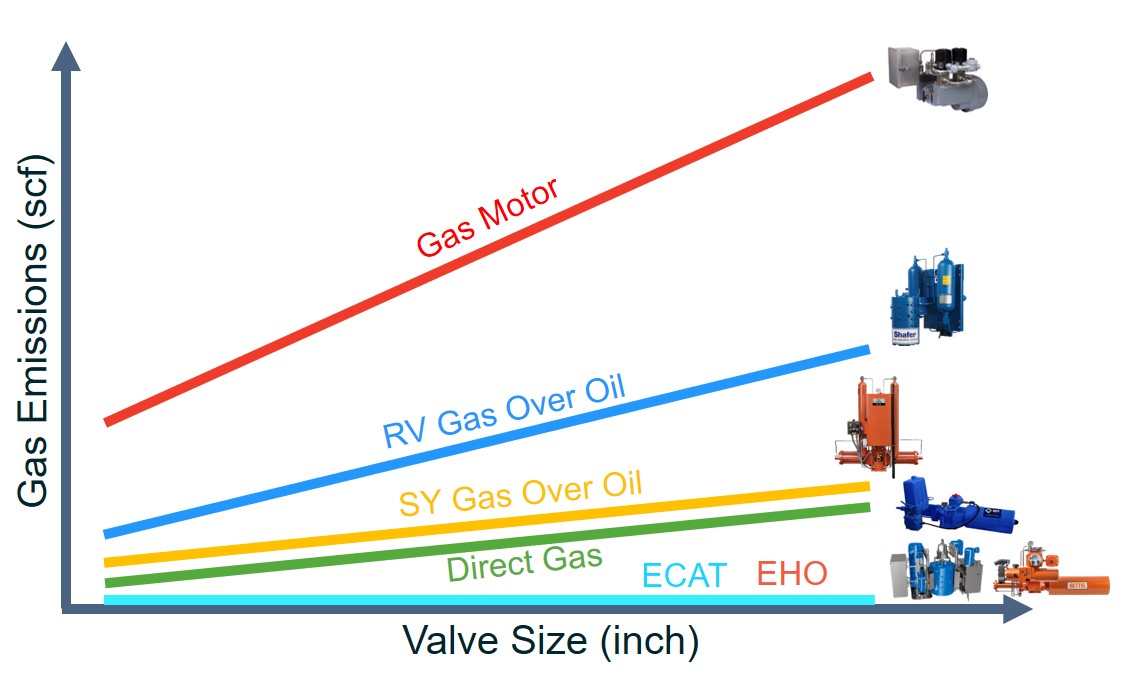Sustainability initiatives often include looking for ways to reduce emissions. Automated valves are often driven by pressurized natural gas and can be a source of methane emissions. In a Control Engineering magazine article, New hydraulic actuator designs offer zero emission options, Emerson’s John Carroll highlights new actuator designs that eliminate these emissions.
John opens noting the three main type of natural gas emissions:
…fugitive emissions, combustion emissions and vented emissions. Fugitive emissions usually result from unintended leaks from equipment seals, packings and gaskets. Combustion emissions stem from burners, flares, heaters and other gas-fired equipment. Vent emissions from the release of methane from natural gas actuated equipment, and reduction of this source is the focus of this article.
He shares the gas emissions in standard cubic feet (SCF) versus the valve size for different gas actuator technologies. These include gas motor, rotary vane (RV) gas over oil, scotch yoke (SY) gas over oil, direct gas, electrohydraulic operation (EHO), and emissions controlled actuating technology (ECAT).

Methane emissions per valve inch are compared for a variety of technologies. Gas motor actuators emit the highest emissions, ECAT emits no methane at all.
Gas-over-oil systems:
…utilize the available motive force of pipeline gas pressure, yet also offer the inherent hydraulic benefits of small actuator size and long service life. While gas-over-oil systems have operated reliably for years, the resulting greenhouse gas emissions are driving the gas pipeline industry to consider other options.
EHO, a zero-emission option, uses:
…a small electric motor to pressurize hydraulic fluid which drives the actuator. The actuator can incorporate a spring that drives the valve to a fail-safe position when power is lost if this functionality is required. Hydraulics allow the actuator to develop high torque within a relatively small footprint and require no air or natural gas for actuation, but the electrohydraulic operator does require a source of electricity.
The latest technology, ECAT:
…has a similar design to a gas-over-oil hydraulic system as it utilizes the available motive force of pipeline gas pressure, and it offers the same inherent hydraulic benefits of small actuator size and long service life. However, it achieves zero emissions by employing a small electric motor to push the natural gas back into the pipeline after each stroke.
ECAT technology is available for scotch yoke and rotary vane actuators, and:
…can be retrofitted to existing gas-over-oil systems, allowing users to reduce methane emissions at a relatively low cost.
Read the article for more on a Canadian pipeline case study on how they eliminate methane emissions for their gas-over-oil valve actuators. Visit the Shafer Emissions Controlled Actuation Technology (ECAT) page on Emerson.com for more on how this actuation technology helps eliminate vent emissions from the release of methane from natural gas-actuated equipment.





